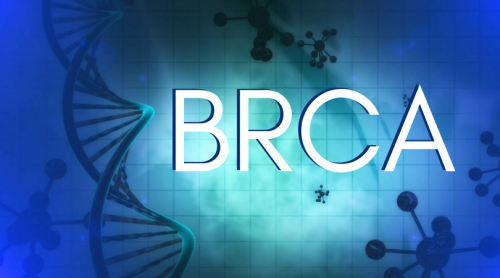
BLOG
The Evolution and Importance of Hereditary Breast and Ovarian Cancer (HBOC) Genetic Testing
By Laura Yecies
October 25, 2021
Breast cancer is the most common cancer for women (other than skin cancer), with over 300k cases diagnosed this year in the U.S. Ovarian cancer, is less common, approximately 20k cases per year, but is far more deadly. In both cases, early diagnosis is critical to achieving positive outcomes. Mammography is an effective test for breast cancer but still misses approximately 20% of cancers, and there is no effective screening for ovarian cancer.
In 1996, screening for pathogenic variants in the BRCA1 and BRCA2 genes, both associated with hereditary breast and ovarian cancer (HBOC) syndrome, became the first genetic test offered clinically for cancer risk assessment. Pathogenic variants in the BRCA genes are associated with high rates of cancer relative to those without the variants. Pathogenic variants in BRCA1 confer a greatly elevated risk of breast cancer and ovarian cancer and a small but significant elevated risk of pancreatic cancer. There is also limited evidence for association with prostate cancer. Pathogenic variants in BRCA2 confer an elevated risk of breast cancer (especially ER+ cancer) and ovarian cancer and a small but significant elevated risk of pancreatic and prostate cancers. There is also limited evidence for association with melanoma and leukemia.1
Researchers estimate that somewhere between 1 in 300 and 1 in 800 people have a pathogenic variant in the BRCA1 or BRCA2 genes. Some ethnic groups, however, are more likely to have mutations in these genes. Approximately 1 in 40 people of Ashkenazi Jewish descent have a BRCA mutation. Because HBOC is an inherited syndrome, a family history of breast, ovarian, and certain other cancers is a significant risk factor. If one parent has a BRCA mutation, their children will have a 50% chance of inheriting the mutation.
As the cost of performing BRCA testing has declined over the last 25 years, the recommended population of those for whom screening testing is indicated has expanded broadly – initially from those with a strong family history of breast and ovarian cancer to those at risk by virtue of being of Ashkenazi Jewish descent to potentially even broader segments of the population.2 The knowledge gained from risk screening for HBOC can be life-saving – knowledge of one’s BRCA status can allow for risk reduction measures, including more frequent and extensive radiological testing and prophylactic oophorectomy, hysterectomy, and mastectomy. Angelina Jolie’s sharing of her personal decision to undergo prophylactic surgeries, as well as broader awareness of the potential benefits has empowered many women to take greater control of their cancer risk.
But what if we are not talking about the risk of potential cancer in a healthy individual but rather the value of genetic testing in patients with a diagnosis of breast or ovarian cancer? In these cases, BRCA testing can still provide important information. First, a patient with a BRCA mutation is at increased risk of developing additional cancers. Testing provides potentially life-saving information to other family members who may also have inherited the pathogenic variant. Finally, there is compelling research showing that adjuvant treatment with the PARP inhibitor olaparib (Merck/AstraZeneca’s Lynparza) significantly delayed cancer progression in germline BRCA1/2-mutated, early-stage, HER2-negative breast cancer patients.3 A benefit was also seen specifically in the reduction of breast cancer recurrence in the PARP inhibitor group – 59 patients died, versus 86 in the placebo group. The data from this and other studies are proving the importance of all breast and ovarian cancer patients and their clinicians knowing their BRCA status.
With BRCA tests being prescribed by more doctors to more people, there is a parallel rise in the desire by local molecular laboratories to be able to offer these tests. Lower cost NGS sequencers fit in the budgets of regional labs, and tools and services such as those from Fabric Genomics enable these labs to quickly and confidently start and scale up their HBOC testing making BRCA testing more readily available for all patients.
- https://ask2me.org/resources.php. Also Oncol Lett. 2019 Feb; 17(2): 1986–1995.PMCID: PMC6341769 doi: 10.3892/ol.2018.9770. BRCA1 mutation in breast cancer patients: Analysis of prognostic factors and survival Joanna Huszno, Zofia Kołosza, and Ewa Grzybowska
- JAMA Netw Open, 2020;3(10):e2022874 October 29, 2020 Cost-effectiveness of Population-Wide Genomic Screening for Hereditary Breast and Ovarian Cancer in the United States, Gregory F. Guzauskas, MSPH, PhD1; et al.. doi:10.1001/jamanetworkopen.2020.22874
- N Engl J Med 2021; 384:2394-2405, Adjuvant Olaparib for Patients with BRCA1- or BRCA2-Mutated Breast Cancer Andrew N.J. Tutt, M.B., et al June 24, 2021 DOI: 10.1056/NEJMoa2105215
SUBSCRIBE
